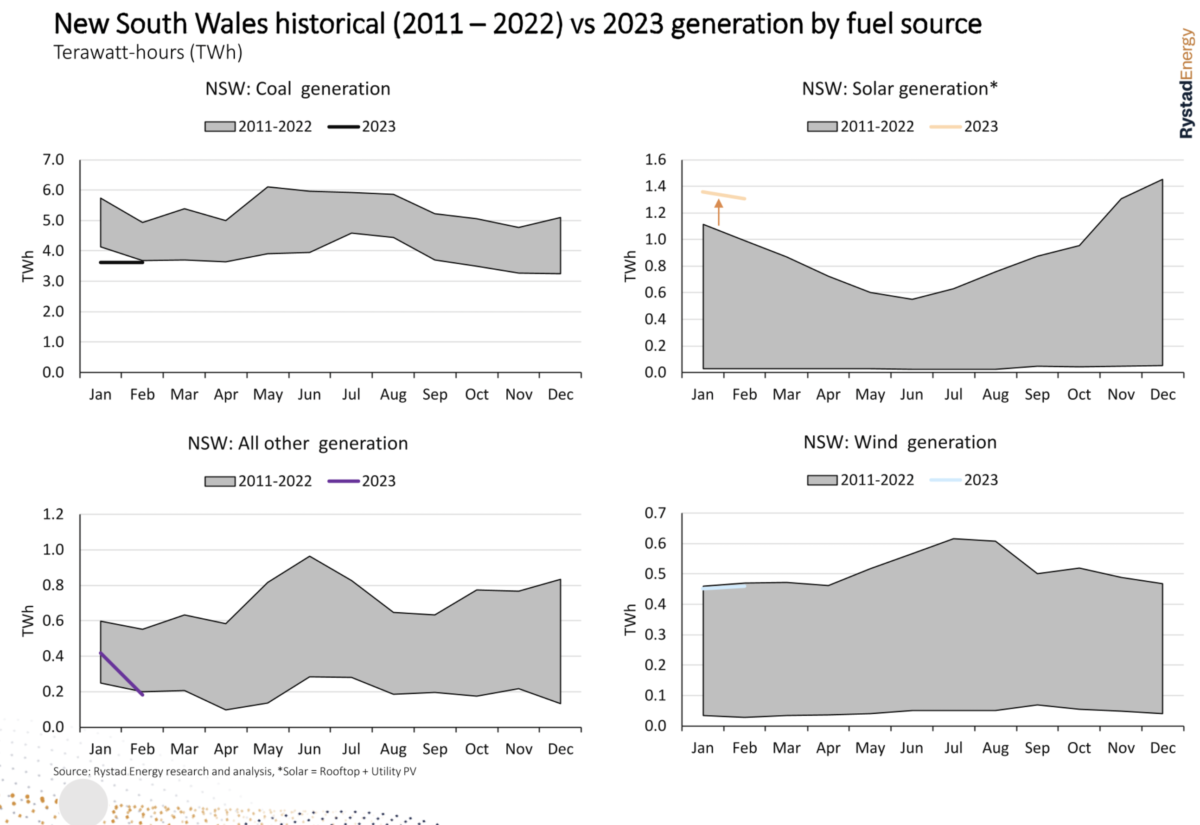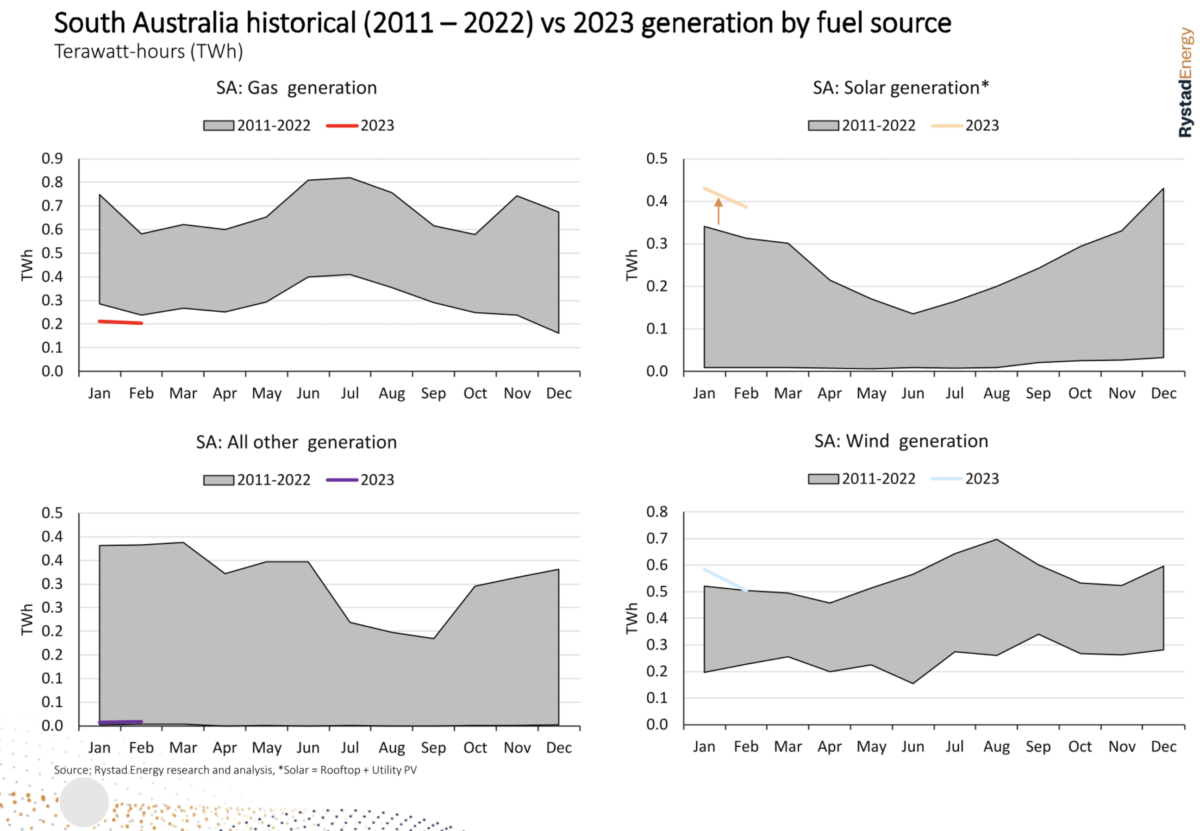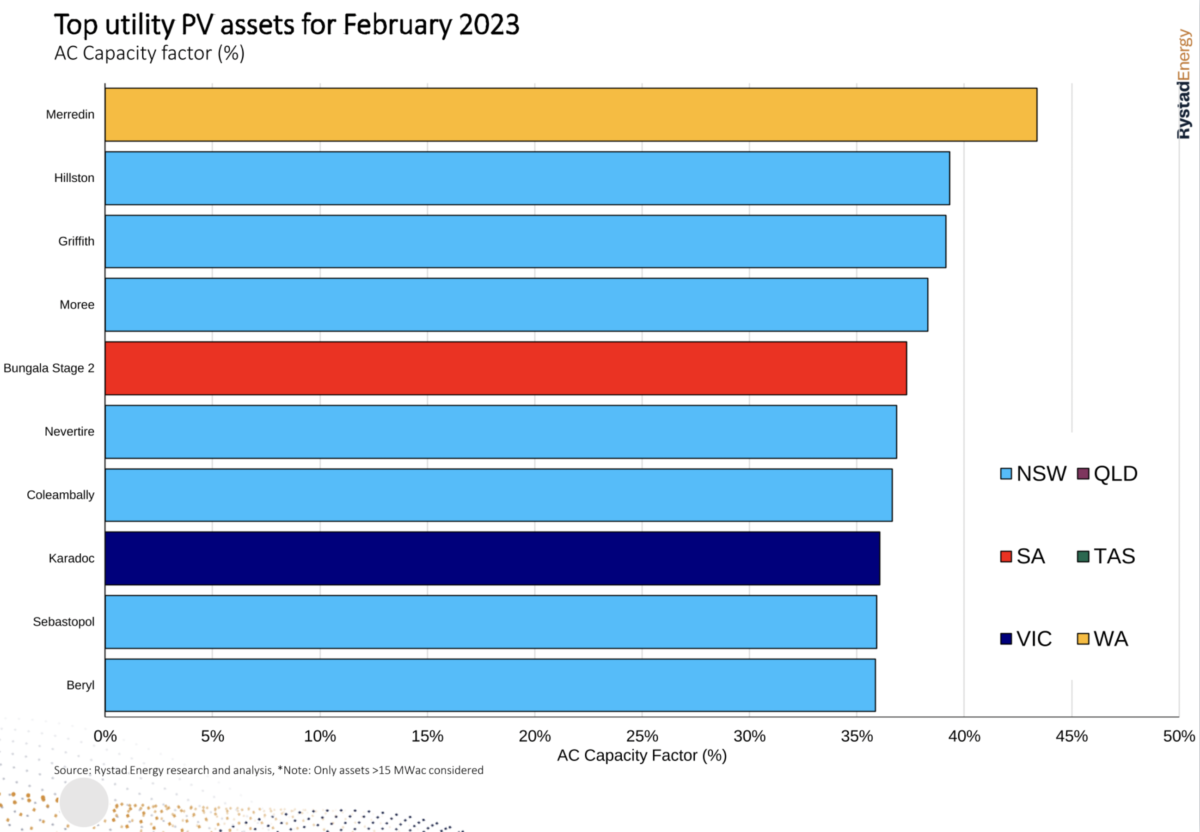Coal-dependent New South Wales (NSW) was Australia’s best renewable energy generator in February, according to figures outlined by Rystad’s Senior Renewables Analyst Dave Dixon on LinkedIn. Renewables provided 1,068 GWh across the month, of which 609 GWh came from utility-scale solar and 459 GWh from wind.
Utility-scale solar saw a substantial 22% year over year growth in NSW, equating to an extra 112 GWh. This is before the coal-pivoting NSW has even seen the effects of its decade of rolling renewable tenders, part of the state’s momentous vision of fitting out 12 GW of renewable energy capacity and 2 GW of storage by 2030.

Queensland’s solar generation also grew a massive 41%, adding 131 GWh compared to 2022.
The 100 MW Merredin Solar Farm in Western Australia’s central Wheatbelt region was crowned the country’s best performing utility-scale PV facility with a 43.4% (AC) capacity factor (CF). The solar farm, acquired by Singapore-headquartered Surya Utama Nuansa (SUN) Energy from original developer Risen Energy in October 2021, was ranked the nation’s top performing large-scale PV asset in 2021 and 2022.
Amp Energy’s Hillston solar farm in NSW was the next best performer, recording 39.3 % (AC) in February, followed by Neoen’s Giffith solar farm 39.1% (AC).
In total, February 2023 ended with all Australian utility-scale solar and wind assets generating 3,751 GWh, a 12% increase from the 3,347 GWh recorded in February 2022, Dixon said.
Victoria was the only state that “saw any meaningful growth in wind generation,” Dixon added, growing 17% or 111 GWh. This is despite the fact all the best utility wind assets for the month were located in Western Australia, including APA Group’s Badgingarra wind farm, Ratch and Alinta Energy’s Yandin Wind Farm, and Iberdola’s Walkaway Wind Farm.
Meanwhile, gas generation in South Australia was well below the expected long term range of 240 GWh to 580 GWh, sitting at just 204 GWh in February 2023.

This content is protected by copyright and may not be reused. If you want to cooperate with us and would like to reuse some of our content, please contact: editors@pv-magazine.com.









1 comment
By submitting this form you agree to pv magazine using your data for the purposes of publishing your comment.
Your personal data will only be disclosed or otherwise transmitted to third parties for the purposes of spam filtering or if this is necessary for technical maintenance of the website. Any other transfer to third parties will not take place unless this is justified on the basis of applicable data protection regulations or if pv magazine is legally obliged to do so.
You may revoke this consent at any time with effect for the future, in which case your personal data will be deleted immediately. Otherwise, your data will be deleted if pv magazine has processed your request or the purpose of data storage is fulfilled.
Further information on data privacy can be found in our Data Protection Policy.